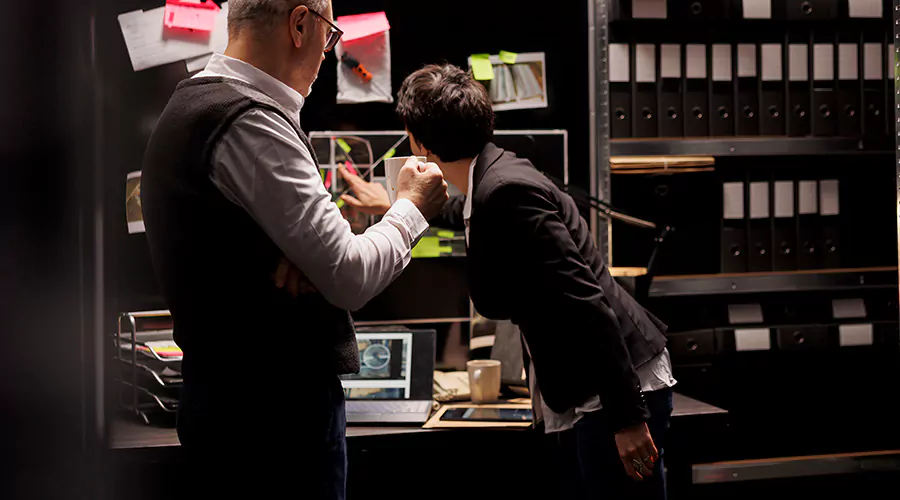How Do I Collect Evidence for My Small Claim?
In the state of California, if you are getting ready for a hearing in small claims court, having the right evidence is a key to winning your case. Strong evidence can greatly influence the judge's decision. Whether you are filing a small claim or defending yourself, knowing how to gather and organize your proof is important. The more prepared you are, the better your chances of success. This article will step by step explain how to collect the best evidence for your small claims case.

Step 1
Identify the type of evidence you need
The first step in gathering evidence is to understand what kind of proof will help your case. The type of evidence you need depends on the nature of the dispute. Common types of evidence include:
- Receipts and invoices: If your case involves unpaid bills, repairs, or purchases, you will need receipts or invoices as proof of the transaction.
- Contracts or written agreements: If your case is about services, business deals, or rental issues, a signed contract can help prove the terms of your agreement.
- Photographs and Videos: These are helpful in cases involving property damage, personal injury, or disputes over work quality. Photos or videos can visually show what went wrong.
- Text Messages and Emails: Digital communications can show the conversations between you and the other party. These can be useful if they demonstrate attempts to resolve the issue before going to court.
Each case is different, each evidence will help you prove your side of the story. For example, if your small claim is about someone damaging your property, clear photographs of the damage would be important. If you are arguing over unpaid rent, the signed rental agreement and rent receipts would be essential.
Step 2
Start Documenting Early
It is important to start documenting everything as soon as a problem comes up. Keep a record of every communication you have with the other party, whether it is written, verbal, or digital. This could include letters, emails, texts, and even notes about phone conversations. Having a detailed record of what happened and when it happened will help you build a strong case.
If the issue involves physical evidence, such as property damage, take photos or videos right away. This will ensure that you capture the situation as it was when the dispute began. The court relies on accurate and recent evidence, so getting this documentation early is important.
For example, if you have a broken appliance that you are suing for, take photos of the appliance as soon as you discover the problem. If it is safe to do so, do not throw it away or repair it until after the court hearing, so the judge can see the condition it was in when the dispute started.

Step 3
Organize your evidence
Once you have collected the evidence, it is crucial to organize it properly. The court will appreciate a clear, well-structured presentation of your case. You can organize your evidence:
Sort by type: Group similar types of evidence together. For example, put all your receipts in one folder, emails in another, and photos in a separate folder. This will make it easy for the judge to follow your case.
Organize Chronologically: Arrange your documents in the order that events happened. This will help the court see the timeline of your dispute.
Make Copies: Always bring multiple copies of your evidence to court. You should have one set for yourself, one for the judge, and one for the other party. In many cases, the court will ask you to provide copies to everyone involved, so be prepared.
Step 4
Get witness Statements
If there are people who witnessed the events related to your small claim case, their testimony can be very helpful. A witness can provide additional support to your side of the story. If someone saw the event in question or has firsthand knowledge of the situation, ask them to provide a written statement. For example, if your neighbor saw someone damaging your property, their statement can add credibility to your case. In situations where you and the other party disagree on what happened, a witness's testimony can be a deciding factor.
If your witness can attend the court hearing, that is even better. Having them testify in person can make a stronger impact. If they cannot attend, ask them to provide a signed written statement, or check with the court if they can testify remotely via video call.
Step 5
Research relevant Laws
Before your hearing, it is a good idea to research any laws that apply to your case. Knowing the law will strengthen your argument and help you understand what kind of evidence the court will want to see. For example, if your case is about a breach of contract, look up the laws that govern contracts in your area. If your case involves a landlord-tenant dispute, familiarize yourself with local rental laws.
The California Courts Small Claims Self-Help website is a good resource for learning about the laws that apply to your case. By understanding the legal framework, you can present a stronger and more focused argument to the judge.
Step 6
Prepare to explain your evidence
When you go to court in California, it is not enough to simply bring your evidence you need to explain how each piece of evidence supports your case. Practice explaining your documents, photos, and other materials before the hearing. For example, if you are presenting a series of emails between you and the other party, be ready to show how the emails prove your point. If you have photos of property damage, be prepared to explain when and where the photos were taken and how they relate to your case. The judge might ask you questions about your evidence, so it is important to be familiar with everything you have collected. The more clearly you can explain your evidence, the easier it will be for the judge to understand your argument.

Conclusion
Collecting and organizing evidence for small claim in California is one of the most important parts of preparing for small claims court. The better you prepare, the higher your chances of winning your case. Here are the key steps to remember:
- Identify the types of evidence that will help your case.
- Start documenting everything as soon as the dispute arises.
- Organize your evidence in a clear, logical way.
- Get witness statements to support your argument.
- Research the relevant laws that apply to your case.
- Be prepared to explain how each piece of evidence supports your claim.
If you're still unsure about how to prepare for court, visit the Small Claims California page for more detailed information. By following these steps, you will be ready to present a strong case and increase your chances of success in small claims court.




